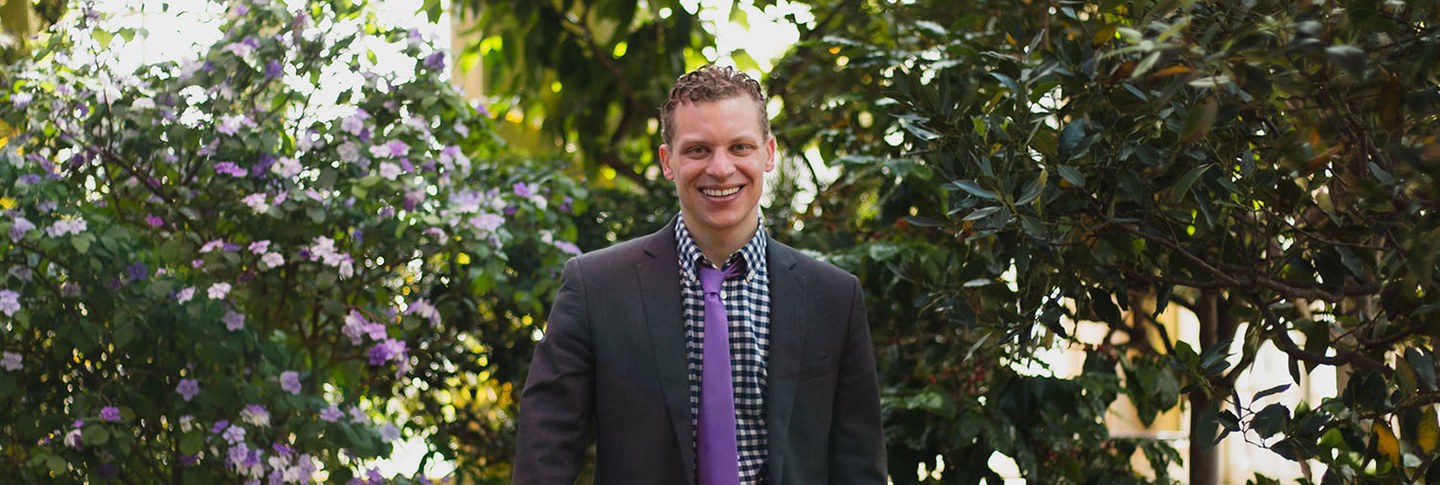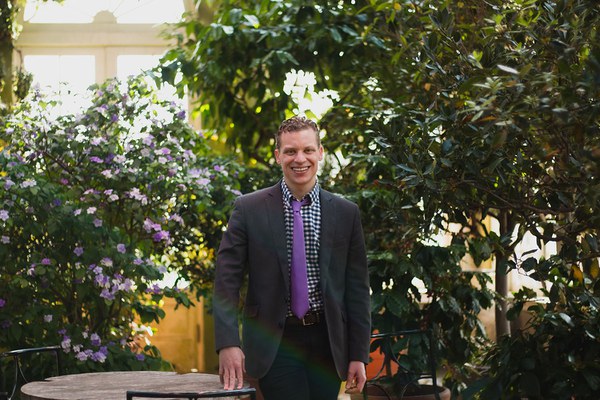Trent Barnes, a PhD candidate in the history of art and architecture at Harvard University, is a William R. Tyler fellow in Pre-Columbian Studies. His recent research report, “Numbered Fortunes: Mantic and Financial Accounting in Teotihuacan Urban Design,” argued that the Teotihuacan urban plan expresses complex calendrical and mathematical reasoning that was applied in other contexts to facilitate elite economic accumulation.
Q&A with Trent Barnes
How did the art and architecture of Teotihuacan shape Mesoamerican civilization?
People are often surprised to learn that Teotihuacan was as historically important as ancient Rome or Constantinople. It was the largest and most influential city of Mesoamerica’s Early Classic period (ca. 150–600) and its legacy endured for another eight or nine centuries, at least until the arrival of European diseases with 16th-century Spaniards. The largest city of the New World, it covered 20 square kilometers and had a maximum population (ca. 400) of 125,000–200,000 people—a scale not surpassed until the rise of the Mexica-Tenochca, or Aztec, capital of Tenochtitlan in ca. 1400. Teotihuacan stood at the center of the creation narratives of that later metropolis, which is a pattern found in many regions of Mesoamerica. It would be fair to say Teotihuacan is where much of what became the core elements of Mesoamerican civilization consolidated politically and economically.
I argue that the city was conceived as a sacred religious document that was laid out to be walked. Walking was the primary mode of reading this important “text,” which was encoded with calendrical data and mathematical equations, sharing many formal similarities with later written and painted manuscripts. Mesoamerica had a robust tradition of walkable texts. For example, the most extraordinary example of hieroglyphic writing from the Americas, the Maya Hieroglyphic Stair of Copán, Honduras, incorporates numerous references to Teotihuacan though it stands about 1500 kilometers away. This monument is a stairway literally inscribed with a historical narrative of dynastic time; each step up or down moves the walker into a new passage of history. At the summit sits a temple inscribed with a Teotihuacan-style pseudo-text that is perhaps a conscientious emulation of the city plan of Teotihuacan.
Because Mesoamerica had no beasts of burden, walking was the foundation of ancient American economic and political life. In monuments like the Avenue of the Dead at Teotihuacan and the Hieroglyphic Stair of Copán, viewers see mundane aspects of the functioning of economic life imbued with cosmic significance. Economic processes became intertwined with celestial mandates.
Why did later groups continue making reference to Teotihuacan?
Walking down the National Mall in Washington, DC, you see countless Greco-Roman temples. They are a bit large in relation to the scale of the ancient past, but their forms signify the legitimacy of current political power and national ideas of “democracy” through their invocation of the Greco-Roman past. These buildings validate our system of politics and self-governance.
Something similar was going on with the Maya at Copán or the Mexica-Tenochca of Tenochtitlan, whose royal houses incorporated elements of the Teotihuacan worldview into their own self-images. Those inheritors were attempting to amplify their own political dynasties by drawing connections with the past in order to project and legitimize their right to govern.
How did working with Maya materials at Dumbarton Oaks shape your research?
Many important dates of Teotihuacan history are best understood from Maya inscriptions. I looked at a recently accessioned collection of photographs donated to the Image Collections and Fieldwork Archives by Justin Kerr, an acclaimed photographer and collector. I studied painted polychrome vessels and Maya objects in the Dumbarton Oaks collection to begin building a digital catalogue that will be available to the public. On one vessel, in the most privileged position, sits a lord (ahau) being offered tribute. Among the “items” offered is a captive, who has a plump belly, a pierced ear, and an elegant coiffure. His body, though denuded, signifies he probably held high status before his capture. Between this captive and the master kneels a courtier holding an obsidian mirror so the ahau can look into the glass. Obsidian was one of the elements most essential to the practice of Teotihuacan state building, both as a weapon and as a gift to Maya elites; these sorts of mirrors were used for scrying or divination, so were essential to the supernatural authority of ancient rulers.
It’s fascinating to think about the possibility of reflectivity on a round object like the Maya vessel. Maya vessel painters used the forms of their objects to structure the visual narratives painted on their surfaces. As the lord looks into the obsidian glass with a haughty expression, perhaps the fortune he reads is that slavery lies in his own future—an enslaved former ruler is certainly what he would see if he is viewing the situation in the vessel’s 360-degree round. Maybe the vessel painter was gently warning his patron, “exercise power graciously if you wish to keep it.” Studying Maya materials gives us a higher degree of resolution onto the dynamics of such economic activities as tribute payment and the symbolism of obsidian than can be found by looking at Teotihuacan alone.
Julia Ostmann is postgraduate writing and reporting fellow at Dumbarton Oaks. Photo by Elizabeth Muñoz Huber, postgraduate digital media fellow.

